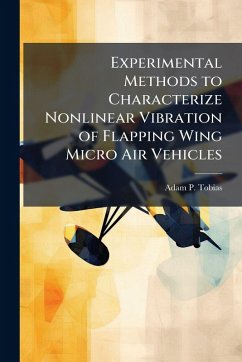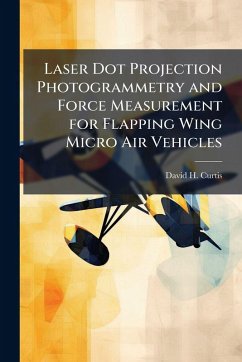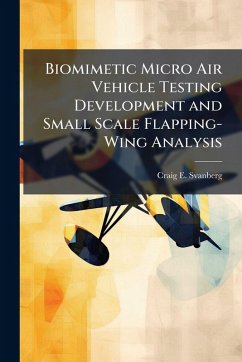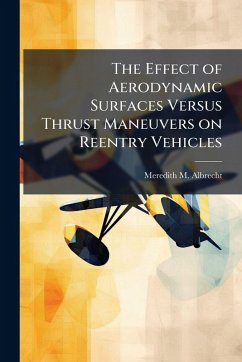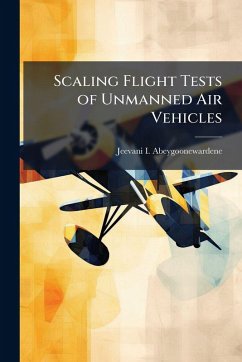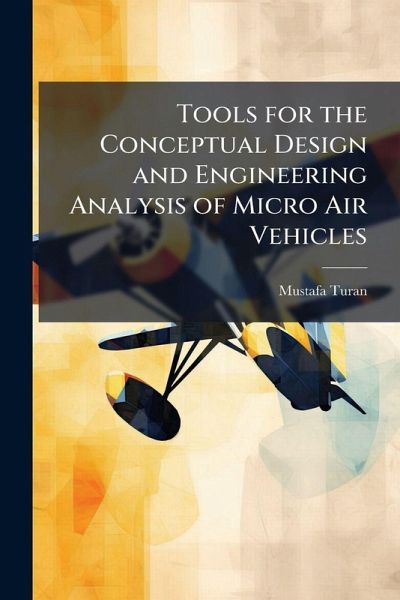
Tools for the Conceptual Design and Engineering Analysis of Micro Air Vehicles
Versandkostenfrei!
Versandfertig in über 4 Wochen
18,99 €
inkl. MwSt.
Weitere Ausgaben:

PAYBACK Punkte
9 °P sammeln!
Micro Air Vehicles (MAV) are a subset of Unmanned Aircraft (UAS) that are up to two orders of magnitude smaller than manned systems. Near-Earth environments, such as forests, caves, tunnels and urban structures make reconnaissance, surveillance and search-and-rescue missions difficult and dangerous to accomplish. Therefore, MAVs are considered ideal for these types of missions. However, the data using full size aircraft is inadequate to characterize miniature aircraft parameters due to the lower Reynolds numbers and low aspect ratio (LAR) wings and impact of wing-propeller interactions. The ma...
Micro Air Vehicles (MAV) are a subset of Unmanned Aircraft (UAS) that are up to two orders of magnitude smaller than manned systems. Near-Earth environments, such as forests, caves, tunnels and urban structures make reconnaissance, surveillance and search-and-rescue missions difficult and dangerous to accomplish. Therefore, MAVs are considered ideal for these types of missions. However, the data using full size aircraft is inadequate to characterize miniature aircraft parameters due to the lower Reynolds numbers and low aspect ratio (LAR) wings and impact of wing-propeller interactions. The main objectives of this research were to: collect and synthesize the available data/tools; create a statistically integrated database/tool set of MAV designs for conceptual design trades; validate the tool set using published experimental data; synthesize and model a prototype design using conceptual and empirical analysis; highlight MAV-specific design criteria and identify gaps in existing data for later research. This work has been selected by scholars as being culturally important, and is part of the knowledge base of civilization as we know it. This work was reproduced from the original artifact, and remains as true to the original work as possible. Therefore, you will see the original copyright references, library stamps (as most of these works have been housed in our most important libraries around the world), and other notations in the work. This work is in the public domain in the United States of America, and possibly other nations. Within the United States, you may freely copy and distribute this work, as no entity (individual or corporate) has a copyright on the body of the work. As a reproduction of a historical artifact, this work may contain missing or blurred pages, poor pictures, errant marks, etc. Scholars believe, and we concur, that this work is important enough to be preserved, reproduced, and made generally available to the public. We appreciate your support of the preservation process, and thank you for being an important part of keeping this knowledge alive and relevant.



